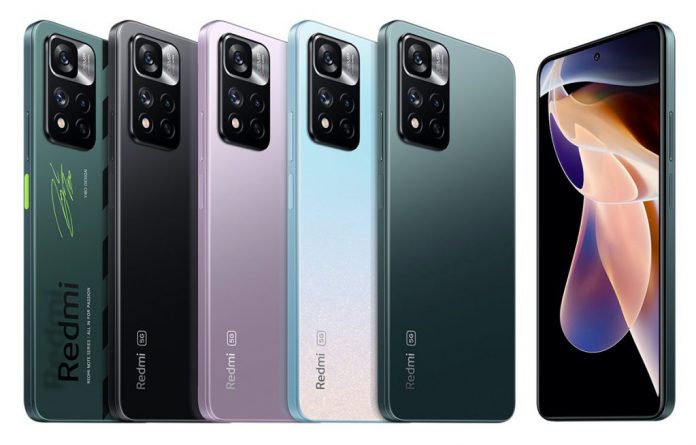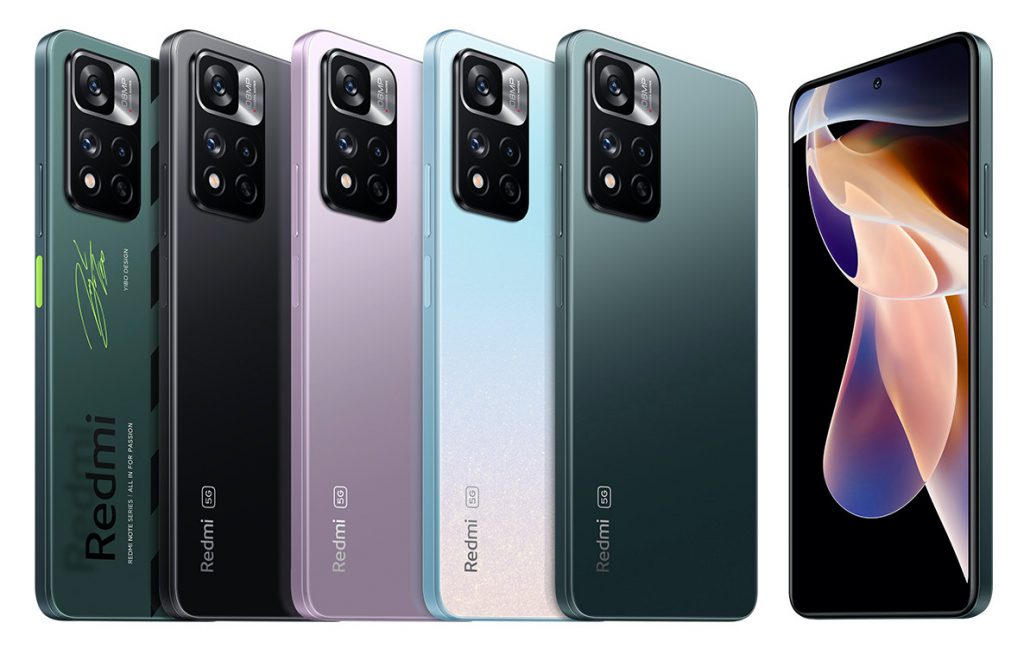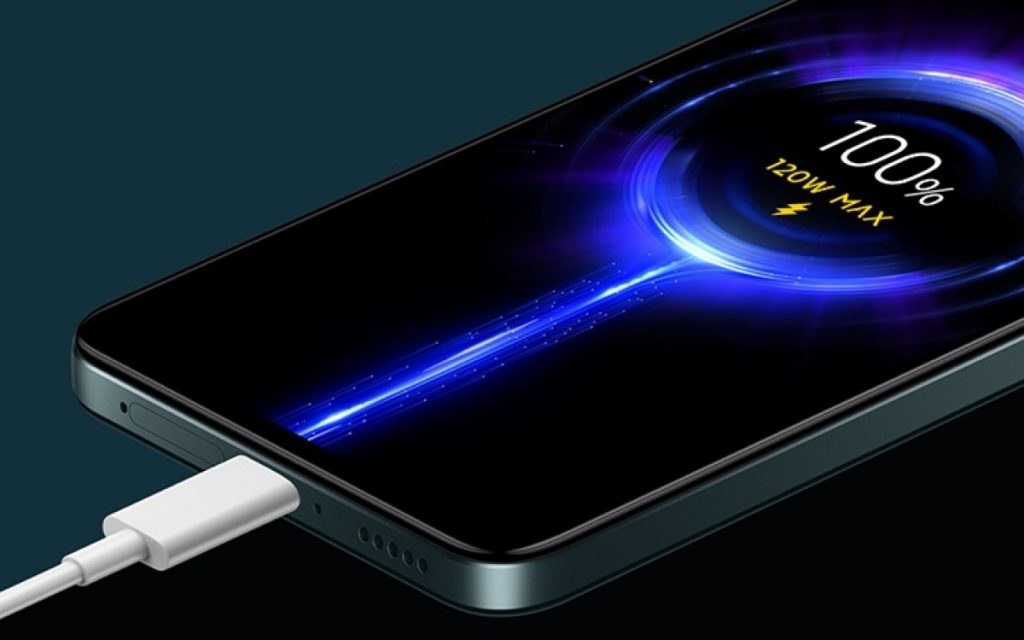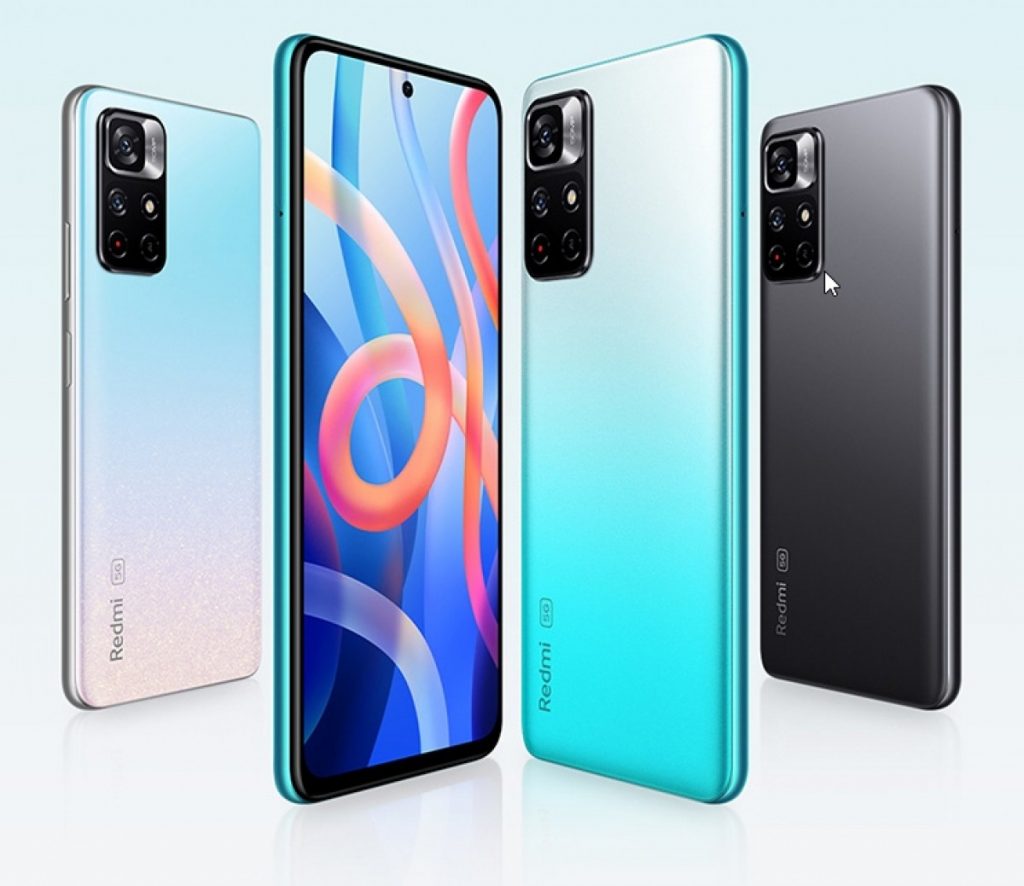Today, Xiaomi launched the Redmi Note 11 Pro, Redmi Note 11 Pro+, and the vanilla Redmi Note 11 in China. The two Pro models are nearly identical, save for the fact that the Plus model has a faster 120W charger and the normal Pro model has a larger battery.
Redmi Note 11 Pro & Note 11 Pro+:
On the surface, both of these phones look exactly alike. a 6.67″ AMOLED screen, a selfie camera punch-hole that measures just 2.96mm in diameter, and has a refresh rate of 120 Hz and touch sampling rate of 360 Hz.
You can choose between three memory configurations: 6/128GB, 8/128GB, or 8/256GB on the inside. Both are powered by MediaTek Dimesnity 920 SoC.
With its 120W fast charging, the Redmi Note 11 Pro+’s 4,500 mAh battery can be fully recharged in just 15 minutes. As a proof of concept, Xiaomi had a stage performer hold his breath for 15 minutes and 5 seconds while a demonstration unit charged.
You’d lose out on the faster-charging speed if you choose the non-Plus phone, but you’d gain a larger 5,160mAh battery. There are only three cameras on the back of the Redmi Note 10 Pro: a 108MP main camera with a Samsung HM2 sensor, which comes from that phone’s predecessor, an 8MP ultrawide camera with a 120-degree field of view, and a 2MP telemacro lens. The 16MP sensor on the front camera makes it a powerful selfie camera.
The phone contains stereo speakers tuned by JBL and a 3.5mm audio connector. The phone has two 0.65 cubic mm audio chambers on either side that are intended to improve sound quality.
There is no microSD card slot on the two Redmi Note 11 Pro handsets. They’re running MIUI 12.5 on top of Android 11.
Redmi Note 11:
The standard Note 11 has a similar design to its Pro counterparts, but it is far less feature-rich. A Dimensity 810 chipset is used, along with one of four memory sizes: 4/128GB, 6/128GB, 8/128GB, or 8/256GB. Each of these sizes is available as an upgrade.
On the front, we have a 6.6-inch Full HD+ LCD with a refresh rate of 90Hz. There are two cameras on the back: a 50MP main unit and an 8MP ultrawide camera. At the very least, the 16MP front-facing camera was kept on the Redmi Note 11.
The battery is downgraded as well. The new Redmi Note 11’s 5,000mAh battery can be charged in 62 minutes using 33W fast charging. There is a side-mounted fingerprint scanner, which also serves as a power key.
Along with Android 11, we see MIUI 12.5 on top of Android 11. We also get stereo speakers, a 3.5mm audio port, and an IR sensor. The Redmi Note 11 does not have a microSD card slot, either, like the Pro models.
For a starting price of CNY1,199 (Rs.14,000/-), the Redmi Note 11 will be available in Gradient, Black, and Mint Blue. On November 1st, there will be a first-ever flash sale.
On November 5, Xiaomi will release the Redmi Note 11 Pro in Black, Aurora Gradient, Violet, or Forest Green. Starting at CNY1,699 (Rs.19,900/-), prices go up from there.
In comparison to its non-Plus sister, the Redmi Note 11 Pro+ starts at CNY1,999 (Rs.23,500) and doesn’t have a gradient paint job.
The Redmi Note 11 Pro+, on the other hand, will have a Yibo Design option that is Green with elegant stripes and has a 3D effect of the Redmi logo emblazoned on the glass back. It will go on sale on Singles’ Day, a Chinese shopping holiday, for CNY2,699 (Rs.31,800/-).












